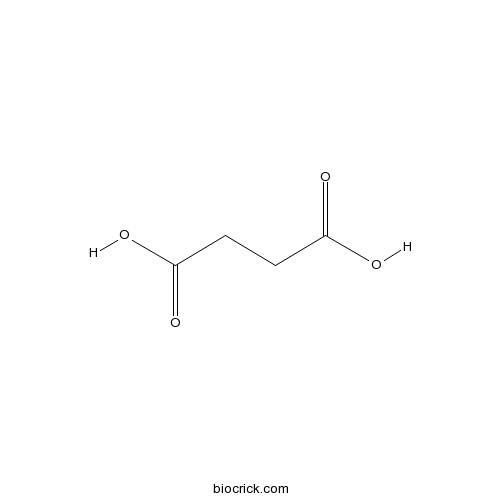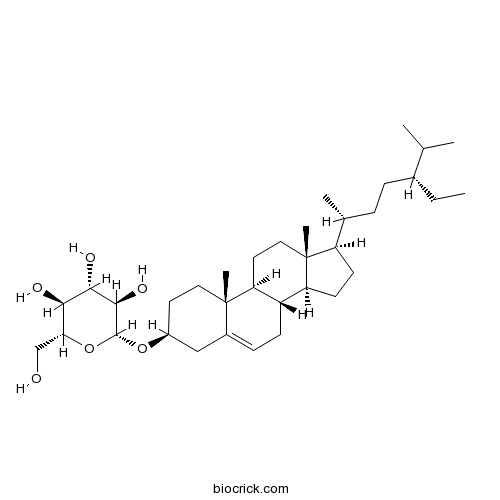Cynanchum bungei
Cynanchum bungei
1. The products in our compound library are selected from thousands of unique natural products; 2. It has the characteristics of diverse structure, diverse sources and wide coverage of activities; 3. Provide information on the activity of products from major journals, patents and research reports around the world, providing theoretical direction and research basis for further research and screening; 4. Free combination according to the type, source, target and disease of natural product; 5. The compound powder is placed in a covered tube and then discharged into a 10 x 10 cryostat; 6. Transport in ice pack or dry ice pack. Please store it at -20 °C as soon as possible after receiving the product, and use it as soon as possible after opening.
Natural products/compounds from Cynanchum bungei
- Cat.No. Product Name CAS Number COA
-
BCN5890
Succinic acid110-15-6
Instructions

-
BCN9049
Hydroquinone123-31-9
Instructions

-
BCN5810
Caudatin38395-02-7
Instructions

-
BCN5531
Daucosterol474-58-8
Instructions

-
BCN4389
Qingyangshengenin84745-94-8
Instructions

Cynanbungeigenin C and D, a pair of novel epimers from Cynanchum bungei, suppress hedgehog pathway-dependent medulloblastoma by blocking signaling at the level of Gli.[Pubmed: 29425683]
None
Caudatin induces caspase-dependent apoptosis in human glioma cells with involvement of mitochondrial dysfunction and reactive oxygen species generation.[Pubmed: 27184666]
Caudatin as one species of C-21 steroidal from Cynanchum bungei decne displays potential anticancer activity. However, the underlying mechanisms remain elusive. In the present study, the growth suppressive effect and mechanism of caudatin on human glioma U251 and U87 cells were evaluated in vitro. The results indicated that caudatin significantly inhibited U251 and U87 cell growth in both a time- and dose-dependent manner. Flow cytometry analysis revealed that caudatin-induced cell growth inhibition was achieved by induction of cell apoptosis, as convinced by the increase of Sub-G1 peak, PARP cleavage and activation of caspase-3, caspase-7 and caspase-9. Caudatin treatment also resulted in mitochondrial dysfunction which correlated with an imbalance of Bcl-2 family members. Further investigation revealed that caudatin triggered U251 cell apoptosis by inducing reactive oxygen species (ROS) generation through disturbing the redox homeostasis. Moreover, pretreatment of caspase inhibitors apparently weakens caudatin-induced cell killing, PARP cleavage and caspase activation and eventually reverses caudatin-mediated apoptosis. Importantly, caudatin significantly inhibited U251 tumour xenografts in vivo through induction of cell apoptosis involving the inhibition of cell proliferation and angiogenesis, which further validate its value in combating human glioma in vivo. Taken together, the results described above all suggest that caudatin inhibited human glioma cell growth by induction of caspase-dependent apoptosis with involvement of mitochondrial dysfunction and ROS generation.
Analysis of Cynandione A's Anti-Ischemic Stroke Effects from Pathways and Protein-Protein Interactome.[Pubmed: 25955557]
Ischemic stroke is the third leading cause of death in the world. Our previous study found that cynandione A (CYNA), the main component from the root of Cynanchum bungei, exhibits anti-ischemic stroke activity. In this work, we investigated the therapeutic mechanisms of CYNA to ischemic stroke at protein network level. First, PC12 cells and cerebellar granule neurons were prepared to validate the effects of CYNA against glutamate injury. Our experiments suggested that CYNA could dose-dependently mitigate glutamate-induced neurons neurotoxicity and inhibit glutamate-induced upregulation of KHSRP and HMGB1, further confirming the neuroprotective effects of CYNA in vivo. Then, on the pathway sub-networks, which present biological processes that can be impacted directly or in periphery nodes by drugs via their targets, we found that CYNA regulates 11 pathways associated with the biological process of thrombotic or embolic occlusion of a cerebral artery. Meanwhile, by defining a network-based anti-ischemic stroke effect score, we showed that CYNA has a significantly higher effect score than random counterparts, which suggests a synergistic effect of CYNA to ischemic stroke. This study may shed new lights on the study of network based pharmacology.
Caudatin Inhibits Human Glioma Cells Growth Through Triggering DNA Damage-Mediated Cell Cycle Arrest.[Pubmed: 25860846]
Caudatin, one of the species of C-21 steroidal glycosides mainly isolated from the root of Cynanchum bungei Decne, exhibits potent anticancer activities. However, the mechanism remains poorly defined. In the present study, the growth inhibitory effect and mechanism of caudatin on human glioma cells were evaluated in vitro. The results revealed that caudatin time- and dose-dependently inhibited U251 and U87 cells growth. Flow cytometry analysis indicated that caudatin-induced growth inhibition against U251 and U87 cells was mainly achieved by the induction of G0/G1 and S-phase cell cycle arrest through triggering DNA damage, as convinced by the up-regulation of p53, p21, and histone phosphorylation, as well as the down-regulation of cyclin D1. Moreover, caudatin treatment also triggered the activation of ERK and inactivation of AKT pathway. LY294002 (an AKT inhibitor) addition enhanced caudation-induced AKT inhibition, indicating that caudatin inhibited U251 cells growth in an AKT-dependent manner. Taken together, these results indicate that caudatin may act as a novel cytostatic reagent against human glioma cells through the induction of DNA damage-mediated cell cycle arrest with the involvement of modulating MAPK and AKT pathways.
Optimization of pressurized liquid extraction of three major acetophenones from Cynanchum bungei using a box-behnken design.[Pubmed: 23203079]
In this work, pressurized liquid extraction (PLE) of three acetophenones (4-hydroxyacetophenone, baishouwubenzophenone, and 2,4-dihydroxyacetophenone) from Cynanchum bungei (ACB) were investigated. The optimal conditions for extraction of ACB were obtained using a Box-Behnken design, consisting of 17 experimental points, as follows: Ethanol (100%) as the extraction solvent at a temperature of 120 °C and an extraction pressure of 1500 psi, using one extraction cycle with a static extraction time of 17 min. The extracted samples were analyzed by high-performance liquid chromatography using an UV detector. Under this optimal condition, the experimental values agreed with the predicted values by analysis of variance. The ACB extraction yield with optimal PLE was higher than that obtained by soxhlet extraction and heat-reflux extraction methods. The results suggest that the PLE method provides a good alternative for acetophenone extraction.
Aqueous ionic liquid based ultrasonic assisted extraction of four acetophenones from the Chinese medicinal plant Cynanchum bungei Decne.[Pubmed: 22858158]
In this study, an aqueous ionic liquid based ultrasonic assisted extraction (ILUAE) method for the extraction of the four acetophenones, namely 4-hydroxyacetophenone (1), 2,5-dihydroxyacetophenone (2), baishouwubenzophenone (3) and 2,4-dihydroxyacetophenone (4) from the Chinese medicinal plant Cynanchum bungei was developed. Three kinds of aqueous l-alkyl-3-methylimidazolium ionic liquids with different anion and alkyl chain were investigated. The results indicated that ionic liquids (ILs) showed remarkable effects on the extraction efficiency of acetophenones. In addition, the ILUAE, including several ultrasonic parameters, such as the ILs concentration, solvent to solid ratio, power, particle size, temperature, and extraction time have been optimized. Under these optimal conditions (e.g., with 0.6M [C(4)MIM]BF(4), solvent to solid ratio of 35:1, power of 175 W, particle size of 60-80 mesh, temperature of 25 ° C and time of 50 min), this approach gained the highest extraction yields of four acetophenones 286.15, 21.65, 632.58 and 205.38 μg/g, respectively. The proposed approach has been evaluated by comparison with the conventional heat-reflux extraction (HRE) and regular UAE. The results indicated that ILUAE is an alternative method for extracting acetophenones from C. bungei.
Murine tyrosinase inhibitors from Cynanchum bungei and evaluation of in vitro and in vivo depigmenting activity.[Pubmed: 21615508]
Two natural acetophenone derivatives, 2,5-dihydroxyacetophenone (2,5-DHAP) and 2,6-DHAP, were purified from Cynanchum bungei and identified as murine tyrosinase inhibitors. Investigation into 2,5-DHAP showed it to be an uncompetitive inhibitor of murine tyrosinase (K(I) 0.28 mm). 2,5-DHAP strongly inhibited both melanogenesis and cellular tyrosinase activity in vitro in 3-isobutyl-1-methylxanthin-stimulated B16 mouse melanoma cells or in vivo in zebrafish and mouse models, but showed no cytotoxicity at the concentrations used. In B16 cells, 2,5-DHAP inhibition was dose-dependent and was fourfold greater than that of arbutin. 2,5-DHAP had no effect on the expression of tyrosinase protein or mRNA, as confirmed by Western blotting and quantitative real-time reverse transcription polymerase chain reaction, respectively. A 2% gel preparation of 2,5-DHAP applied to the skin of mice significantly increased the average skin-whitening index (L value), indicating its potential use as a treatment for skin hyperpigmentation in humans.
An application of high-speed counter-current chromatography for separation and purification of bungeiside-A, bungeiside-B and baishouwubenzophenone from Cynanchum bungei Decne.[Pubmed: 21465600]
Cynanchum bungei Decne (Baishouwu in China), is a famous traditional Chinese medicine that has been widely used as a tonic medicine or health food for centuries. Bungeiside-A, bungeiside-B and baishouwubenzophenone, as the major bioactive constituents in C. bungei, are challenging to separate and purify since bungeiside-A and -B are present in very low concentrations and have similar structures and high polarity.


